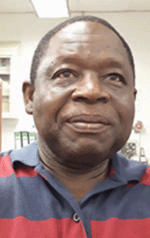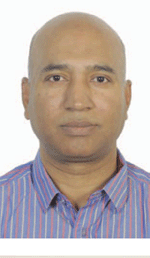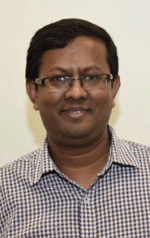The role of carbon nanotubes (CNTs) and carbon particles in green enhanced oil recovery (GEOR) for Arabian crude oil in sandstone core
Bashirul Haq A E , Dhafer Al Shehri A , Abdulaziz Al Damegh B , Abdullatif Al Muhawesh B , Mustafa Albusaad A , Mohammad Lardhi A , Assad Barri A , Abdulsamed Iddris A , Nasiru Muhammed A , S. M. Zakir Hossain C , Mohammad Mizanur Rahman A and Abdul Aziz DA Department of Petroleum Engineering, King Fahd University of Petroleum and Minerals, Dhahran 31261, Saudi Arabia.
B Saudi Aramco, PO Box 5000, Dhahran 31311, Saudi Arabia.
C Department of Chemical Engineering, University of Bahrain, P.O. Box 32038, Sakheer, Bahrain.
D Center of Research Excellence in Nanotechnology, King Fahd University of Petroleum and Minerals, Dhahran 31261, Saudi Arabia.
E Corresponding author. Email: bhaq@kfupm.edu.sa
The APPEA Journal 60(1) 133-142 https://doi.org/10.1071/AJ19017
Submitted: 7 January 2020 Accepted: 23 March 2020 Published: 15 May 2020
Abstract
Green enhanced oil recovery (GEOR) is a chemical enhanced oil recovery (EOR) involving the injection of specific green chemicals (surfactants/alcohols/polymers) that effectively displace oil because of their phase-behaviour properties, which decrease the IFT between the displacing liquid and the oil. Carbon nanoparticles application in EOR has sparked interest in the last few years due to its unique characteristics. Carbon nanotubes (CNTs) are one of the common carbon nanomaterials with EOR potential, but they are not used with green surfactant to improve oil recovery. In addition, the recently developed Date Leaf Carbon Particle (DLCP) method has not been applied to GEOR and requires further study. The role of carbon particles in GEOR is not well understood and requires further investigation. This study was conducted to examine the effectiveness of DLCP and CNT in green surfactant alkyl polyglucoside (APG) for recovering residual oil within rock pores. The study consisted of a set of laboratory experiments. Two formulations of DLCP, CNT and green surfactant mixtures were selected for core-flood experiments based on interfacial tension measurements to examine their potential for EOR. In the first formulation, 0.08% DLCP was mixed with 0.5% APG and produced 45% of tertiary oil and 89% of oil initially in place (OIIP). This formulation produced a significant quantity of incremental oil after water flooding. Lastly, 0.5% APG was blended with 0.08% CNT; this produced about 27% tertiary oil and 77% OIIP.
Keywords: APG, Date Leaf Carbon Particle, DLCP.

Bashirul Haq is currently working as an Assistant Professor in the Department of Petroleum Engineering at the King Fahd University of Petroleum and Minerals (KFUPM) in Saudi Arabia and has 15 years of experience in research, teaching, consultancy and testing in reservoir, production and drilling engineering. Haq received a PhD in Petroleum Engineering from The University of Western Australia (UWA) and an MSc in Petroleum Engineering. Bashir rendered consulting services to Chevron, Helix RDS, Unocal, and Bangladesh Oil, Gas and Mineral Corporation (Petrobangla) and worked at the UWA, CSIRO, and Curtin University. He is a member of Engineers Australia and SPE. |

Dr Dhafer Al-Shehri has more than thirty years of oil and gas industry and academic experience. Currently he is the Chairman of the Department of Petroleum Engineering and a faculty member within the College of Petroleum Engineering and Geosciences at KFUPM, Dhahran, Saudia Arabia. He also worked for Saudi Aramco from 1996 to 2014. He assumed leading technical and management positions with upstream operations, engineering and research capacities. Dhafer received BS and MS degrees from KFUPM and a PhD from Texas A&M University. His experience includes drilling, production, reservoir management and applied research. He is an active member of SPE and has served in many committees, including chairing the SPE Technical Symposium. He has authored may conference and journal papers and was a key note speakers at several SPE workshops. He is also a member of several professional societies. |

Abdulaziz Al Damegh is a Petroleum Engineer working as an Advisory Consultant with Ernst & Young. Abdulaziz holds a bachelor’s degree from the KFUPM in 2019. He is curious to learn and expand the knowledge in the petroleum industry. Abdulaziz is a member of SPE. |

Abdullatif Almuhawesh is currently working as a Production Engineer at Saudi Aramco. Abdullatif holds a bachelor’s degree from the KFUPM in 2019. He is curious to learn and expand the knowledge in the petroleum industry. Abdullatif is a member of SPE. |

Mustafa Albusaad is working as a Mud Engineer Trainee at M-I SWACO. Mustafa Albusaad received a BS in Petroleum Engineering from the KFUPM in Saudi Arab. He is a member of SPE. |

Mohammad Lardhi received a BS in Petroleum Engineering from the KFUPM in Saudi Arab. He is currently completing his MS in Petroleum Engineering. Mohammad is a member of SPE. |

Assad Barri received a BSc in Petroleum Engineering from Khartoum University, Sudan, in 2003. He has worked as a Senior Well Testing Engineer in White Nile Petroleum Operating Co., Sudan, from 2004 to 2012. He completed a MS in Petroleum Engineering from the KFUPM, Saudi Arabia, from 2012 to 2015. Since 2015, he has been working in the Department of Petroleum Engineering at KFUPM as a Technical Researcher and Lecturer. |

Mr Abdulsamed Iddris holds a BS degree from the KFUPM and received his post-graduate professional training (mud, cement and drilling and workover engineering) in the USA and Canada. He has over 25 years’ experience in the Petroleum Fluids Properties (PVT) Laboratory, Reservoir Rock Properties Laboratory, and Drilling Fluids and Cementing Laboratories, both in teaching and research. Over the years he has helped devise a simple, unique and successful technique (in the teaching laboratories) to produce high quality and successful engineers. |

Nasiru Salahu Muhammed is a PhD student currently working on naturally derived nanoparticles for GEOR under the supervision of Bashirul Haq: an Assistant Professor in the Department of Petroleum Engineering at the KFUPM. He received his BEng in Chemical Engineering from the Federal University of Technology Minna, Nigeria, and an a MSc in Petroleum Geosciences and Petroleum Engineering from the University of Port Harcourt, Nigeria, and Heriot Watt University, Edinburgh (UK), respectively. He is an SPE member. |

S. M. Zakir Hossain received his PhD from Japan in 2008. He did two postdocs from McMaster and Waterloo Universities, Canada. His field of specialization is Biochemical Engineering. He has gained over eight years of teaching and over ten years of research experience. He has more than 50 scientific publications in several referred journals and conferences, including two patents in his field. Currently, he is working as an Assistant Professor in the Department of Chemical Engineering, University of Bahrain. |

Dr. Mohammad Mizanur Rahman is a Research Scientist (III) at Center of Research Excellence in Corrosion (CoRE-C), King Fahd University of Petroleum and Minerals. Prior to joining KFUPM, he was a visiting Researcher at Department of Surface Engineering in Chalmers University of Technology, Sweden. His research interests are the conception, development and exploitation of surface structures in green polymeric material for their application in diverse areas of protection for offshore platform, pipe line, ship hull and concrete structure. |

Dr Abdul Aziz received his BSc (Hons) in Chemistry in 1999 and his MSc in Organic Chemistry in 2001 from the University of Dhaka, Bangladesh. He obtained his PhD degree in August 2009 from the Pusan National University in South Korea. Dr Aziz has authored 58 papers in well reputed, peer-reviewed journals in addition to numerous conference proceedings, presentations and patents. |
References
Alnarabiji, M. S., Yahya, N., Shafie, A., Solemani, H., Chandran, K., Hamid, S. B. A., and Azizi, K. (2016). The influence of hydrophobic multiwall carbon nanotubes concentration on enhanced oil recovery. Procedia Engineering 148, 1137–1140.| The influence of hydrophobic multiwall carbon nanotubes concentration on enhanced oil recovery.Crossref | GoogleScholarGoogle Scholar |
Curbelo, F. D. S., Santanna, V. C., Neto, E. L. B., Dutra, T. V., Dantas, T. N. C., Neto, A. A. D., and Garnica, A. I. C. (2007). Adsorption of non-ionic surfactants in sandstones Colloids and Surfaces. A, Physicochemical and Engineering Aspects 293, 1–4.
| Adsorption of non-ionic surfactants in sandstonesCrossref | GoogleScholarGoogle Scholar |
Green, D. W., and Willhite, G. P. (1998). ‘Enhanced Oil Recovery’. SPE Text Book Series. (Society of Petroleum Engineers: Texas).
Hajiabadi, S. H., Aghael, H., and Ahmmadi, M. K. (2020). An Overview on the Significance of Carbon-based Nanomaterials in Upstream Oil and Gas Industry. Journal of Petroleum Science and Engineering 186, 106783.
| An Overview on the Significance of Carbon-based Nanomaterials in Upstream Oil and Gas Industry.Crossref | GoogleScholarGoogle Scholar |
Haq, B., Aziz, M. A., Hakeem, A. S., Mheibesh, Y. G., Ahmeed, M. A., and AlShehri, D. (2019a). Date-Leaf Carbon Micro-Nanostructured Particles (DLCMNPs) in Enhanced Oil Recovery. In ‘SPE Middle East Oil and Gas Show and Conference, Manama, Bahrain, 18–21 March’. (Society of Petroleum Engineers.)
Haq, B., Liu, J., Liu, K., and AlShehri, D. (2019b). The role of biodegradable surfactant in microbial enhanced oil recovery. Journal of Petroleum Science and Engineering 189, 106688.
| The role of biodegradable surfactant in microbial enhanced oil recovery.Crossref | GoogleScholarGoogle Scholar |
Haq, B., Shehiwin, F., Al Shehri, D., Liu, J., Muhammed, N.,, Mohammad, E., Al Hamad, J., Al-Ramadhan, A., Iddris, A., and Barri, A. (2020). The role of supercritical CO2 in gas well health issue – liquid loading. The APPEA Journal 60, 143–154.
| The role of supercritical CO2 in gas well health issue – liquid loading.Crossref | GoogleScholarGoogle Scholar |
Hitzman, D. O., Stepp, D. A. K., and Graumann, L. R. (2003). ‘Augmenting a microbial selective plugging technique with polymer flooding to increase the efficiency of oil recovery – a search for synergy’, Prepared for US Department of Energy Assistant Secretary for Fossil Energy.
Hughes, T. V., and Chambers, C. R. (1889). Manufacture of carbon filaments US Patent 405 (1889), p. 480.
Novoselov, K. S., Geim, A. K., Morozov, S. V., Jiang, D., Zhang, Y., Dubonos, S. V., and Grigorieva, A. A. (2004). Electric field effect in atomically thin carbon films Science 306, 666–669.
| Electric field effect in atomically thin carbon filmsCrossref | GoogleScholarGoogle Scholar | 15499015PubMed |
Novoselov, K. S., Geim, A. K., Morozov, S. V., Jiang, D., Katsnelson, M. I., Grigorieva, I. V., Dubonos, S. V., and Firsov, A. A. (2005). Two-dimensional gas of massless Dirac fermions in graphene. Nature 438, 197–200.
| Two-dimensional gas of massless Dirac fermions in graphene.Crossref | GoogleScholarGoogle Scholar | 16281030PubMed |
Oberlin, A., Endo, M., and Koyama, T. (1976). Filamentous growth of carbon through benzene decomposition Journal of Crystal Growth 32, 335–349.
| Filamentous growth of carbon through benzene decompositionCrossref | GoogleScholarGoogle Scholar |
Rosen, M. J. (1978). ‘Surfactants and interfacial phenomena’. (John Wiley: New York).
Tibbetts, G. G. (1983). Carbon fibres produced by pyrolysis of natural gas in stainless steel tubes. Applied Physics Letters 42, 666.
| Carbon fibres produced by pyrolysis of natural gas in stainless steel tubes.Crossref | GoogleScholarGoogle Scholar |


